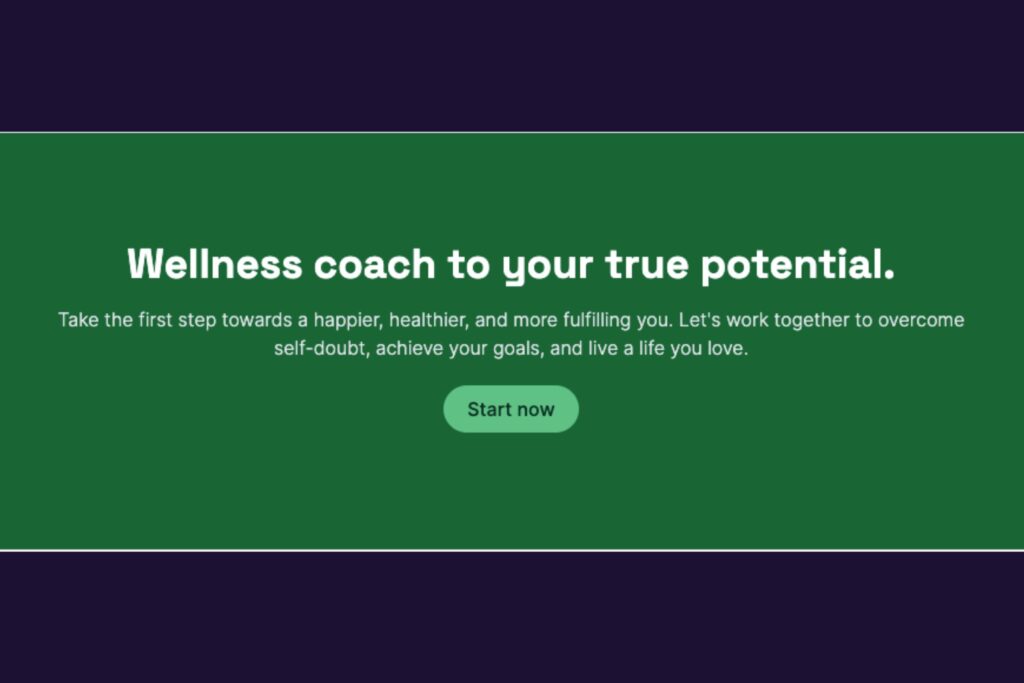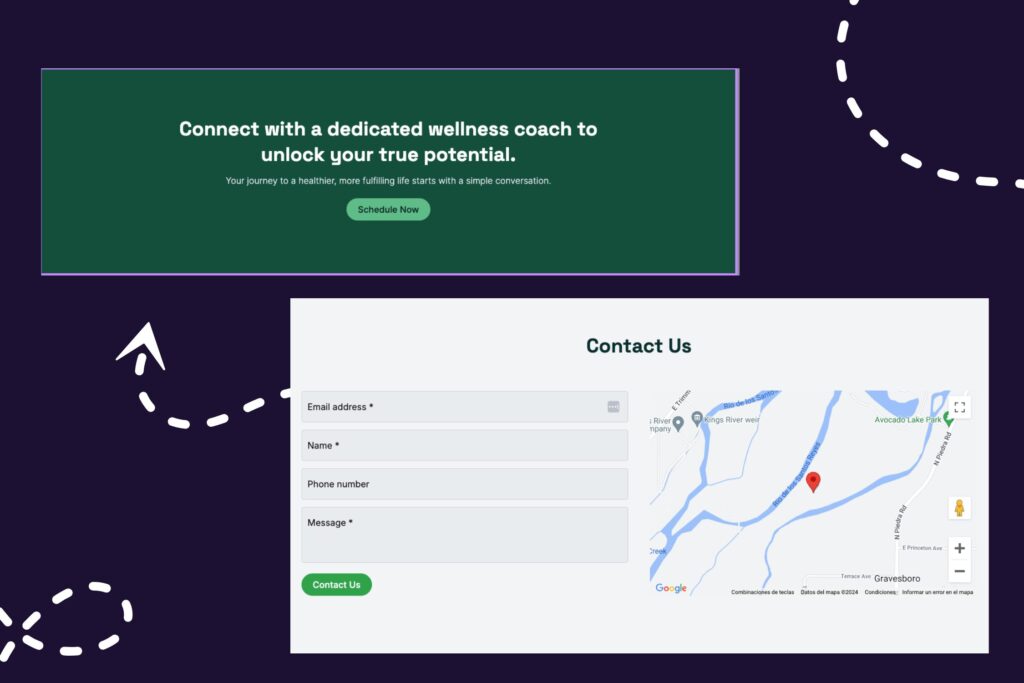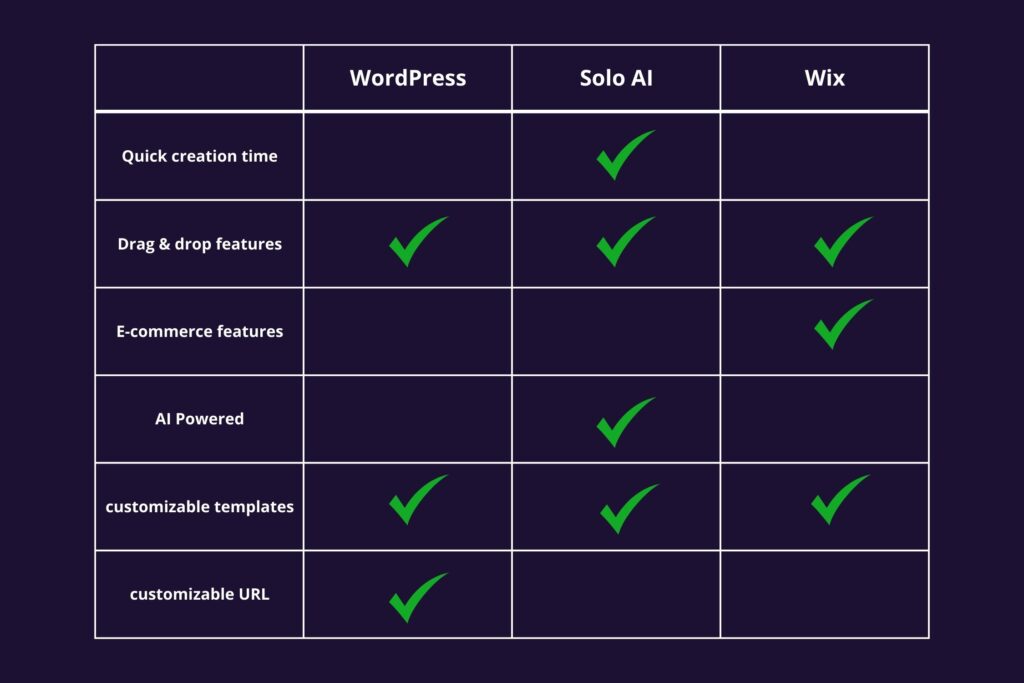The coaching industry has grown by 62% since 2019, and this number is estimated to increase, along with the number of coaching websites on the market.
With so many coaching competitors, becoming relevant and visible online seems like an impossible task.
Yes, it might look hard, but nothing is impossible. After carefully reviewing the best coaching sites out there, here are 6 must-have elements that truly work to make your coaching website stand out:
- About section
- Blog Section About Coaching
- True testimonials
- Photo Gallery
- Booking system
- Coaching Website Builder
Of course, this is easier said than done, so we have broken down each section so you can make your site truly shine.
1. About Page
Your About page is your digital introduction. This is where you share your unique story and expertise: that is what will make you stand out from the rest.
Potential clients want to know why you’re the right coach for them, so paint the best picture of yourself as a trusted advisor, someone who genuinely cares about their client’s success.

Elements your coaching website’s About page needs
- Mention your team, even if it is just an assistant or speaker, and make sure to share with your potential clients who they can expect to talk with.
- Share your why: Why did you start your coaching business? What’s your mission? Be honest and heartfelt.
For example, you could say something like, “I used to let self-doubt hold me back from my dreams. But with the right guidance, I was able to break free and live my life to the fullest. That’s why I’m passionate about helping others do the same.”
- Add your social media handles. This is the perfect place to showcase your other online presence platforms like Instagram, TikTok, linkedIn and more.
2. Blog Section About Coaching
A blog on a life coach website is always a powerful tool to establish your authority and attract organic traffic.
This is your time to shine a light on your expertise and talk about the topics that fuel your soul. Share valuable insights, tips, and strategies related to the people you want to attract.
Use AI writing tools like Jasper.ai or Gemini to help streamline the content creation process. Remember, consistency is key. Aim to publish blog posts regularly to keep your audience engaged.

What are the elements of a good coaching blog?
- SEO Element: When writing blog posts, focus on a specific keyword or phrase that’s relevant to your audience. For example, if you’re a life coach specializing in stress management, you might target keywords like “stress relief techniques” or “overcoming anxiety.” You can use free SEO tools to help you find the best keywords for your blog.
- Link to Relevant Content: your blog section is intended to provide value to your potential clients. Refer to other blog posts, articles, or resources that provide additional information on the topic. For example, you could link to a previous blog post on mindfulness techniques or a relevant article from a reputable source.
- Connect with Your Audience: Make it easy for your readers to get in touch with you. Include a contact form or a link to your social media profiles or even your email at the end of the blog. Additionally, encourage your readers to take some sort of action. This could be signing up for your newsletter, booking a consultation, or purchasing a product or service.
3- True Testimonials
Did you know that about 92% of buyers of any service or product read testimonials before buying? So, it’s safe to say that you need them on your site!
Testimonials from clients are not only proof that you are a real coach who worked with real people, but they show that your coaching has positive results, too.
Boost your credibility by featuring quotes from clients who have experienced positive transformations through your coaching.

Where do testimonials on my coaching website go?
- Homepage Hero Section: A strong testimonial right on your homepage can immediately grab visitors’ attention from the first visit. Pages are usually for a carousel of testimonials.
- Dedicated Testimonials Page: Create a dedicated page to showcase a collection of testimonials. This provides a lengthy overview for clients wanting more information on your services.
- About Page: Incorporate testimonials into your About page to humanize your brand and highlight your impact.
- Blog Posts: if you have blogs that talk about a service or workshop, embed testimonials within the relevant proof of the positive effect of that specific service.
4. Photo Gallery
A picture is worth a thousand words, and they are correct. A photo gallery is a visual portfolio that tells people what you do at a quick glance without reading a lot of text.
A gallery for a life coaching website can showcase your expertise and the quality of your work.
However, be mindful not to overdo pictures! A carousel on your home page, a few rows of images, and even a drop-down gallery are more than enough to leave space for other relevant text information.

What are the best types of pictures for a coaching photo gallery?
- Headshots: This is probably the most important and common one. A professional headshot can help you establish a personal connection with your audience.
- Action Shots: Capture yourself in action, and ask people on your staff to take pictures of your work, whether it’s leading a workshop, coaching a client, or speaking at a conference.
- Behind-the-Scenes Glimpses: Offer a behind-the-scenes look at your coaching process, such as group coaching sessions or one-on-one consultations.
5. Booking System
Don’t let potential clients get lost in a difficult booking process. An easy booking system can streamline the process and make it more comfortable for clients to schedule appointments.
Booking systems and schedule forms eliminate the barriers to booking outside of your page, such as waiting for a long response, coordinating schedules, or wasting time by leaving your site and opening another app.
An online booking form, like the Solo AI forms, gets the client’s information directly into your inbox, allowing you to contact them and figure out your schedule beforehand.
While booking systems connect directly to your calendar and are more time efficient, they are also more intrusive to your schedule and activities.
What are the most popular and effective booking systems for a coaching website?
- Calendly: Calendly is an incredibly user-friendly interface that is ideal for scheduling simple consultations or calls. Offers different scheduling views, integrations with popular calendars, and free and paid plans.
Best for Coaches who value simplicity and offer short-term consultations.
- Acuity Scheduling: Advanced scheduling features like group sessions, buffer times between appointments, and online payment processing. Acuity Offers a free trial and several paid plans.
Best for Coaches who offer various appointment types, have a busy schedule and want to manage payments directly.
- Appointy: Appointy allows customization of booking forms, integrates with popular video conferencing tools, and offers free and paid tiers.
Best for coaches who want to gather specific information from clients during booking and use video conferencing for consultations.

6. A Coaching Website Builder for Your Needs
A well-designed website is essential for making a great first impression. It should be visually appealing, easy to navigate, and mobile-friendly.
Remember, the first seconds of a user on a website are more than enough for them to make an idea about your services, so make this time worth it.
With so many coaching sites out there, you need a coaching website builder that allows you to personalize your site and make it stand out e.g. being able to choose your font for your website
What are the best coaching website builders in 2024?
- WordPress: WordPress remains the top website builder on the market. It is Highly customizable and offers a vast array of themes and plugins for all your needs. While platforms like WordPress offer flexibility, they can be a bit time-consuming and require technical expertise.
Best for tech-savvy coaches who want full control over their website’s design and functionality.
- Solo AI: Solo’s advantage is its AI-powered website creator. This means you don’t need any coding experience, design expertise, or technical knowledge. Forget about the drag and drop; just answer a few questions and get your personalized site.
Best for Coaches who want a professional-looking website without the technical hassle.
- Wix: Wix is great because of the user-friendly drag-and-drop interface, which is ideal for creating visually stunning websites without much coding knowledge.
Best for Coaches who prioritize design, want to get involved in the interface and want to build a website quickly.

Solo AI For Your Coaching Website Needs
If you are looking to create a beautiful site in a simple way, consider a solution like Solo AI. With Solo, you can create a stunning, professional website without any coding knowledge.
Solo is an AI website creator that lets you create a website for free and grow your business digitally. Capture leads, showcase your services, and build your brand online with easy-to-use customizations.
Simply input your business information, and Solo will handle the design and technical aspects of building your website.
